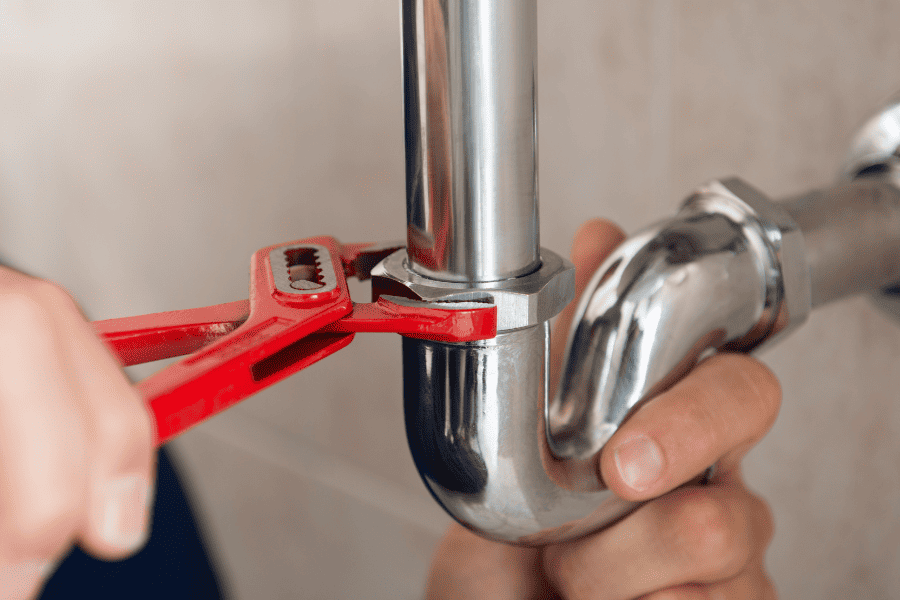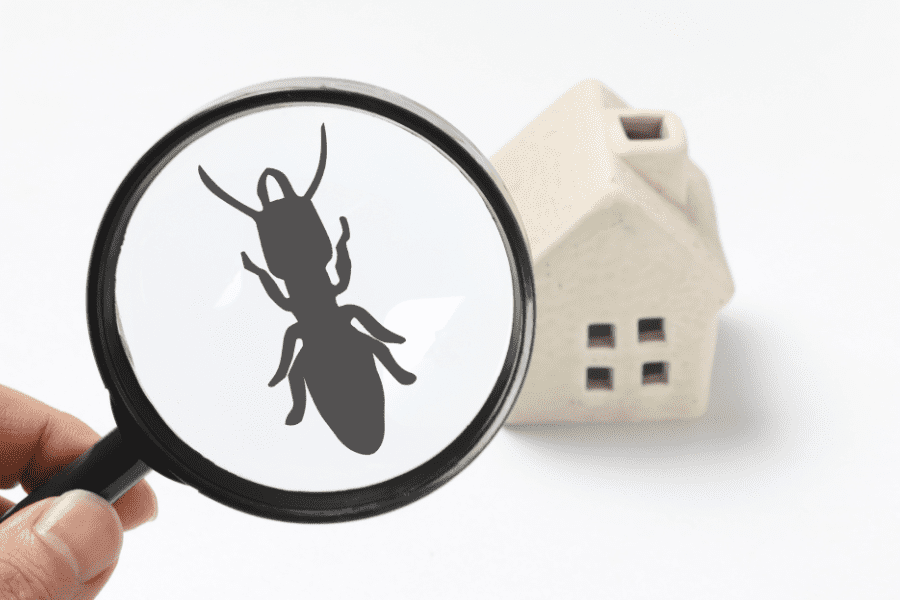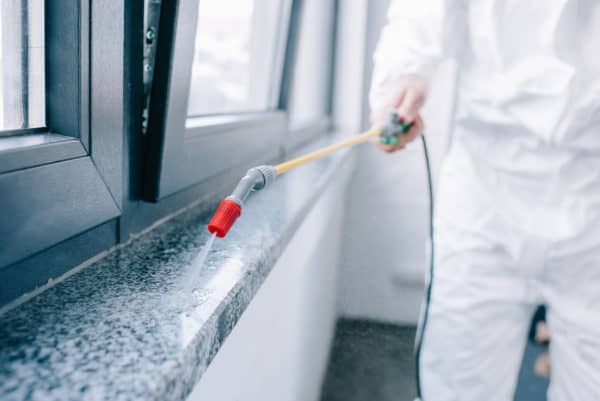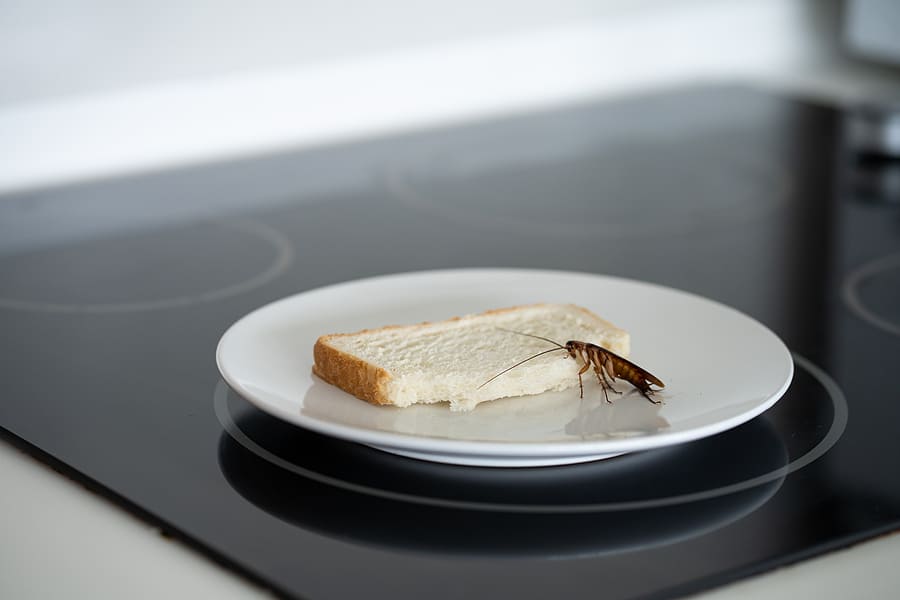READY TO GET STARTED?
REQUEST A FREE ESTIMATE
Fill out the form below or call (888) 466-7849 for a free, no-obligation estimate.

It’s inevitable to come across certain pests, especially during the warmer months of the year. Though, with Florida’s tropical weather year-round, it can seem like dealing with pests is nonstop. Roaches, mice, mosquitoes, and ants are just a few pests that can take over a household, become an annoyance, spreading disease, and causing damage to your home. One of the best ways to avoid a pest infestation is preventing them in the first place by placing do-it-yourself pest proofing measures throughout your home. Check out our list of DIY pest control tips you can utilize:
Pests are attracted to three things: food, shelter, and water. The best way to keep pests from entering your home is to get rid of what they’re attracted to. Try to keep your home as clean as possible, vacuuming and sweeping on a regular basis. Likewise, repair any leaky pipes and faucets both inside and outside of your home. Avoid leaving your pet’s food and water bowls overnight, taking them in and storing their leftover food in plastic containers with lids. Declutter your home, removing any old magazines, newspapers, and cardboard boxes you don’t need.
Mice, ants, and roaches can enter through the smallest hole or gap they find. It’s important to take the time to inspect the outside of your home for any potential entry points, sealing them up with either caulk or steel wool, depending on how large it is. Don’t forget to check foundations, food frames, windows, utility pipes, cables and wires, and the roof for any potential opening pests could enter in from. Repair any broken windows or screens and fil openings in pipes and vents.
To get to your home, pests must enter your yard first, so it’s important to keep it less attractive to them as it is your home. Regularly mow your grass, keeping it short and eliminating any weeds. Remove piles of leaves, debris, and fallen branches from your yard. Look to eliminate any clutter or items you don’t need, such as old automobiles, trashcans, tires, and dumpsters. If you store wood, keep it elevated from the ground and at least 20 feet from your home.
Pests need water to survive, and the smallest amount of standing water will attract pests like termites and mosquitoes. Keeping your home as dry as possible is key to avoiding their infestation. Check around your home for any water leaks and look for loose fixtures or dripping faucets too. If you have a crawlspace, consider utilizing a dehumidifier to decrease excess moisture. Make sure you clear any debris and leaves from your gutters, especially after a hurricane or thunderstorm.
Sometimes, a pest infestation needs more attention than DIY pest control methods can provide. If you’re still seeing an influx of pests or would like to get ahead of pest prevention, consider reaching out to a local pest control company for some help. These professionals will identify the pest at hand, provide proper treatment, and recommend the best prevention techniques you can use at home to avoid a future pest infestation.

Having a secure pest control plan isn’t always top of mind for homeowners. But once you spot that first sign of a pest infestation, it surely becomes top priority! We want you to be ahead of the infestation game and have a strong relationship with a local pest control company. Let’s go over the benefits of maintaining a regular visit from your technician.
With the assistance of a reputable company, your home will be set up to combat any potential pest threats including termites, mosquitoes, cockroaches, ants, and more! A pest professional will work with you to provide the best plan of action for your home to ensure the health of your property and family.
Up front it might seem like a waste of money to continue with scheduled visits from your technician, but keeping that regular schedule will help keep the chance of infestations low. With lower chances of having a major problem, it saves you money in the long run. No need to worry about bigger problems taking over when you have a solid plan.
With months in between visits, it’s always good to know some easy DIY pest control methods. Making sure you clean your kitchen after each meal by cleaning up spills and crumbs will help lower the chances of spotting a pest. Another great DIY is to walk around your property and look for any potential openings to your home. Be sure to seal them immediately.
Dealing with a pest problem is never a homeowner’s idea of fun. If you think you’re ready for a solid pest control solution, then reach out to your local pest control company and receive a customized plan perfect for you and your property.

Pest control might not be top of mind when it comes to planning for the New Year, but it should be! Get ahead of the game in preventing pests and consider the importance of investing in pest control. Let’s go over some of the top benefits of having a pest control plan.
With the help of a pest control company, your home will be set up to properly prevent pests year-round and help to eliminate popular Southeast pests such as mosquitoes, termites, ants, and more. A pest professional will work with you to provide the best plan of action for your home to ensure the health of your property and family going into the new year.
Dealing with a pest problem in the New Year is never a homeowner’s idea of fun. If you need further assistance with pests, consider reaching out to your local pest control company to get a customized pest control plan for a pest-free year!

Spring marks the beginning of the season for many common household pests. Mice, ants, wasps, roaches, bed bugs, and more increase their activity when the weather warms up. While a pest sneaking into your home here and there is normal, how do you know when it’s time to call in the professionals? Here are 5 signs it may be time to call an exterminator.
A random pest sighting here and there in your home is normal. They can sneak in through open doors and windows or through the tiniest gaps and holes in the exterior of your home. They can also hitch a ride on luggage or boxes that are brought in from outside. There is a difference, however, between an occasional sighting and a daily presence. Seeing 2 to 3 ants in your kitchen once isn’t a big deal; seeing a trail of hundreds of ants going from the wall to the pantry is. Seeing one mouse outside in your yard isn’t a big deal; seeing multiple in your home, trapping several, or seeing the presence of droppings is. If the pest problem is escalating, it may be time for an exterminator.
Once you identify the pest problem, the next step is to try and get rid of them. Many homeowners prefer to try DIY pest control methods first before calling in a pro. If you continue to have a problem with pests despite your best efforts, it may be time to call an exterminator.
Pests can pose serious health risks to your family, your pets, and even your home. Termites can cause structural damage that can compromise the integrity of your house. Rodents are known to chew through electrical wires putting you at risk for a fire. Rodent feces contains harmful pathogens that can make your family sick. Cockroaches are known to trigger allergies and asthma. Some homeowners aren’t comfortable using DIY methods or have concerns about using over-the-counter chemicals around their children or pets. For these reasons, it may be time to call an exterminator.
Some pests are nearly impossible to eradicate on your own or require professionals to get rid of them. Bees are protected and must be relocated appropriately. Some bird species are protected, as well, and bird nest removal must be handled professionally. Roaches, termites, and bed bugs can be extremely difficult to eradicate on your own. If you have an issue with any of these pests, it may be time to call an exterminator.
When the signs of an infestation become too big to ignore, it may be time to call in a professional. Some common signs of pests in your home include:
If you have a problem with any kind of pest, contact a professional pest control company for an inspection to help identify what kind of pest you are dealing with, how they are getting in, and how to get rid of them quickly and safely.
Flowers and Plants That Attract Honeybees

The last thing any homeowner wants to deal with is an unwanted household pest. Roaches, bed bugs, termites, rodents, and more each bring their own set of problems and damage to both homes and health. Our first instinct is to get rid of these pests quickly and we often go for a DIY route. But what should you know before you dive into DIY pest control?
DIY vs professional pest control is a common debate. One of the most important factors that goes into pest control decisions is cost. Although DIY products typically cost much less then commercial products, they can ultimately cost more in the long run. Most DIY pest control methods are reactive – they aren’t applied until a pest problem is already established. Professional pest control provides preventative treatments to help stop infestations before they start. Even though you may save money on the products, you may end up spending significantly more in treatment and repair costs down the road.
Other factors that go into pest control decisions include effectiveness, expertise, safety, and guarantee. DIY products typically work as “spot treatments,” encompassing a small area where the problem is. They don’t usually cover a large area nor last long enough to control a full blown infestation. Professional products are designed for large scale use, getting into places you may not see pests such as inside walls, crawlspaces, and foundations. Proper identification of the pest you are treating for is critical to elimination. While pest control products are labeled with easy-to-follow instructions, professional pest control technicians are equipped with the most up-to-date technology and techniques to help eliminate a pest infestation. The same is true for safety. DIY products can contain chemicals which are hazardous for humans and/or pets. They may also contain chemicals that the average homeowner isn’t familiar with. Professionals are trained on proper use of these chemicals, reducing the risk to you and your family. They also have green pest control options that can be utilized. Finally, DIY products may contain a manufacturer’s warranty or store guarantee on the product. Professional pest control companies will usually provide a service guarantee where they return between visits (usually at no additional charge) for any pest problems that pop up before service is due again.
If you have evaluated all the angles and decided the DIY approach is best for your situation, here are a few of our favorite DIY pest control tips you can use in your home.